I have it on good authority that global consumption of Eggs Benedict has increased over the last several quarters. I attribute this to an article I posted several months ago, highlighting the origins and delectability of this magnificent dish. My personal contribution to this surge has been modest. However, over the intervening months I have discovered several sensational new Eggs Benedict versions. I felt duty bound to document them photographically and bring them to your attention. So, cutlery at the ready, here we go again.
You forgot my silverware
Talking of cutlery, while sitting in a restaurant the other day, I pointed out that I did not have any. Since this was in the United States, my American companions thought this was hilarious. They would have referred to the missing articles as ‘silverware’. After a flurry of remarks about ‘Upstairs, Downstairs’, ‘Downton Abbey’, and ‘The Royal Family’, we moved on to other topics. I suspect, though, that my friends will taunt me regularly about ‘cutlery’ in the weeks and months to come.
That incident took place on Taco Tuesday, the day of the week when local Mexican restaurants knock a dollar off the price of a taco. I mention this because, as you will see, Mexican cuisine intersects emphatically with the focus of this article: Eggs Benedict.
To recap, for those of you who missed out on part one of this expedition, Eggs Benedict is a staple of American brunch menus. The inventorship of this dish is disputed, but its classic configuration is not: toasted English muffin, Canadian bacon (ham), a poached egg, and Hollandaise sauce. But, chefs with iconoclastic tendencies see Eggs Benedict as a showcase for their creativity. This is good news for those of us who are fans of brunch.
Polenta Benedict
The finale of my earlier article was a complete reimagining of the dish. The only ingredient considered inviolate was the poached egg. Each ‘tower’ comprised a base of fried polenta, topped with chorizo, shrimp, poached egg, jalapeño-flavoured Hollandaise, and a shrimp garnish.
Those of you familiar with Mexican cuisine will recognise some characteristic ingredients. This was Eggs Benedict elevated to a new plane of visual and gustatory excellence. For the photographers out there, this was shot with a Leica Q2, at f/5.6, 1/50s, ISO 250.
The chef who created this culinary work of art has not been content to rest on his laurels. Determined to explore further this intersection of Mexican and American classics, he has since pulled out all the stops.
In the following dishes, apart from poached eggs, the changes have been rung in every component of an Eggs Benedict. Vegetarians should avert their eyes; we are talking meat, all the way down…
Eggs Benedict Machaca
Machaca is a dried meat, either beef or pork, and when rehydrated is a popular ingredient in Northern Mexican cuisine. In this Benedict variant, Machaca and a toasted half croissant have been substituted for the traditional muffin and ham, respectively. The shredded beef has been sautéed with bell peppers and onions, and the eggs topped off with a Guajillo-Hollandaise.
Guajillos are a deep red member of the capsicum (chilli, pepper) family, considered mild on the Scoville hotness scale. Hence, the rich red colour of the Hollandaise.
I think you will agree, this interpretation of Eggs Benedict is a visual treat. The parsley garnish, orange Hollandaise and red bell pepper complement each other beautifully. It tasted wonderful too.
This was photographed outdoor, under a canopy, and so the light was reasonably bright, but diffuse. Hence, at f/4, the Q2 selected a shutter speed of 1/250s with ISO 100.
Benedict Divorciados
Not only is our illustrious chef creative with food, he clearly possesses a wry sense of humour. So far, this is the only asymmetrical Eggs Benedict I have come across, where the two ‘towers’ are not identical. Divorciados means ‘divorced’ in Spanish. The two halves of the dish differ in the choice of salsa selected to replace the traditional Hollandaise topping. One features salsa roja (red salsa) and the other salsa verde (green salsa).
But perhaps the most unusual ingredient in the dish is grilled cactus. It is called nopal in Spanish, but may be more familiar as prickly pear cactus in English. Nopales are widely used in Mexican cooking, cleaned of spines and sliced. Poblano peppers, strips of steak, queso fresco (fresh cheese), sour cream, and a poached egg, sit atop the grilled cactus tortilla. The dish is garnished with a slice of avocado.
Of the two ‘divorcees’, I preferred the one topped with red salsa. It had a nice ‘kick’ that the green variant did not.
The photo was taken indoors, at f/5.6, with a shutter speed of 1/50s at ISO 400.
Chorizo Quesadilla Benedict
This was an extremely rich dish!
A quesadilla is a tortilla, usually corn, filled with cheese and other ingredients, then grilled to melt the cheese. This Benedict sits on a quesadilla made by sandwiching ingredients between two small, handmade tortillas. Along with mozzarella and asiago cheeses, the filling includes sautéed bell peppers, onions and chorizo, a type of pork sausage.
Upon the quesadilla sit avocado slices and a poached egg, under a roasted, spicy Hollandaise sauce.
After wolfing down half the dish, I had to admit defeat and take the rest home in a box, to eat the following day. It still tasted delicious.
I also took this indoor shot at f/5.6, 1/50s, ISO 400.
How many more versions are out there?
Since chefs are creative souls who appear to relish a challenge, I suspect the number of possible permutations is large, possibly infinite.
Just as ornithologists seek out and photograph previously unseen birds, I shall continue to search out and photograph new interpretations of Eggs Benedict. I wonder if that makes me a Benedictologist?
One thing is for sure, I will always be inviting my Q2 to join me whenever I head out for brunch. Not only is it the perfect travel camera, it has turned out to be a perfect food photography camera too. I will also be double-checking that I have my silverware to hand. Or, perhaps that should be cuchillería?
Read more from the author
Join the Macfilos subscriber mailing list
Our thrice-a-week email service has been polished up and improved. Why not subscribe, using the button below to add yourself to the mailing list? You will never miss a Macfilos post again. Emails are sent on Mondays, Wednesdays, and Fridays at 8 pm GMT. Macfilos is a non-commercial site and your address will be used only for communications from the editorial team. We will never sell or allow third parties to use the list. Furthermore, you can unsubscribe at any time simply by clicking a button on any email.

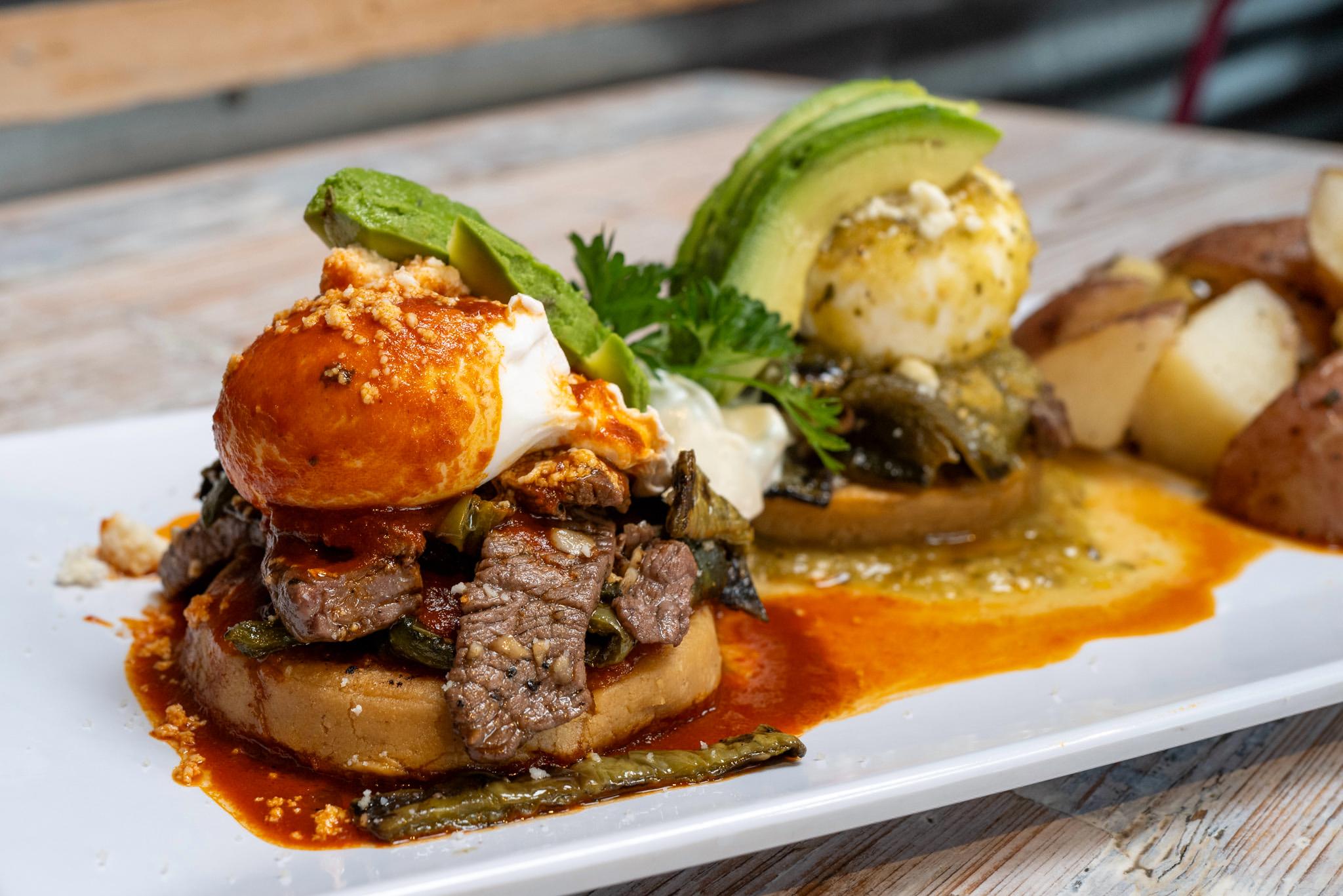
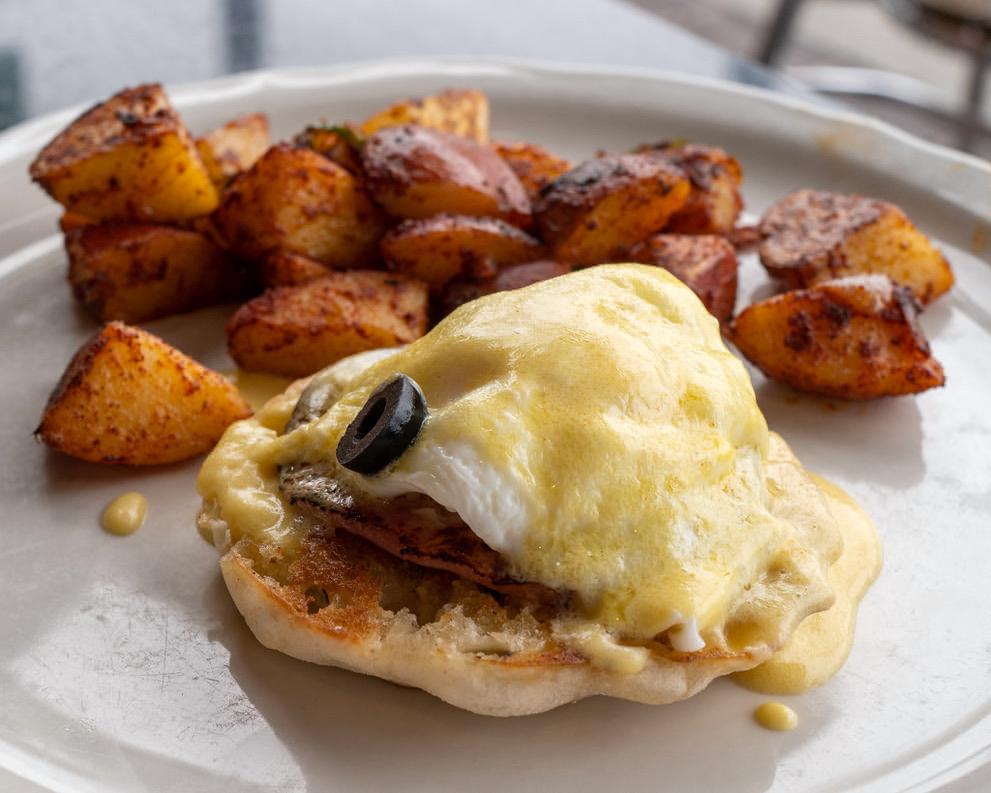
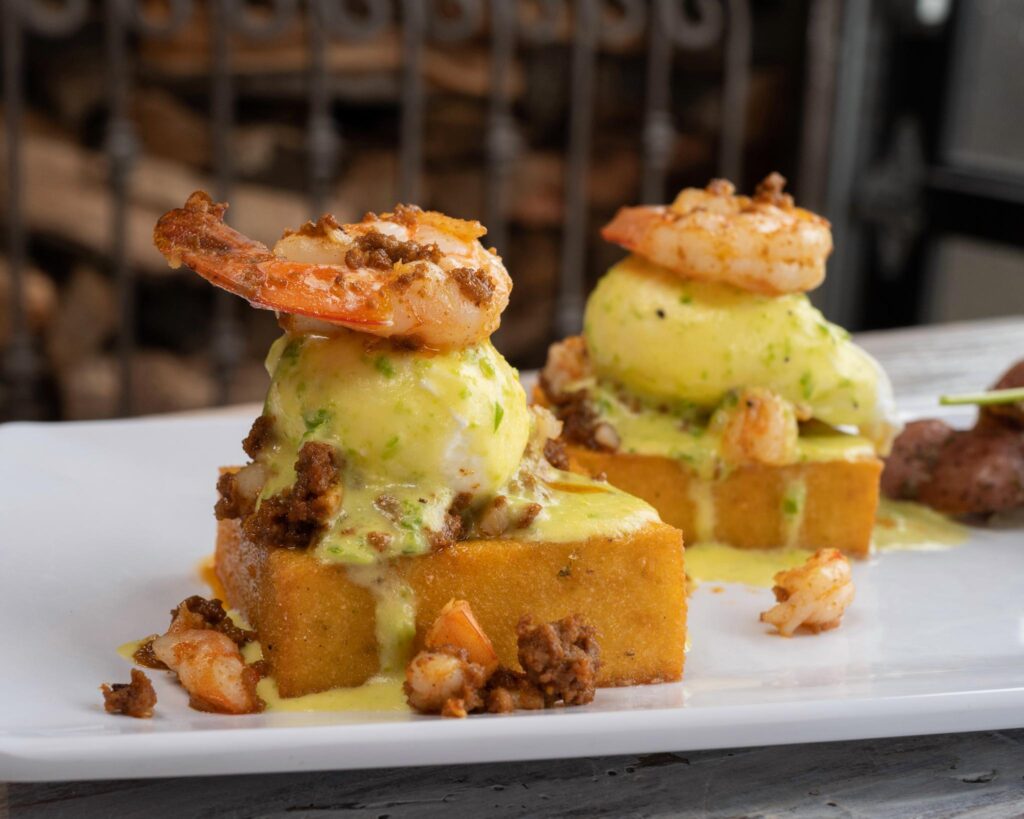

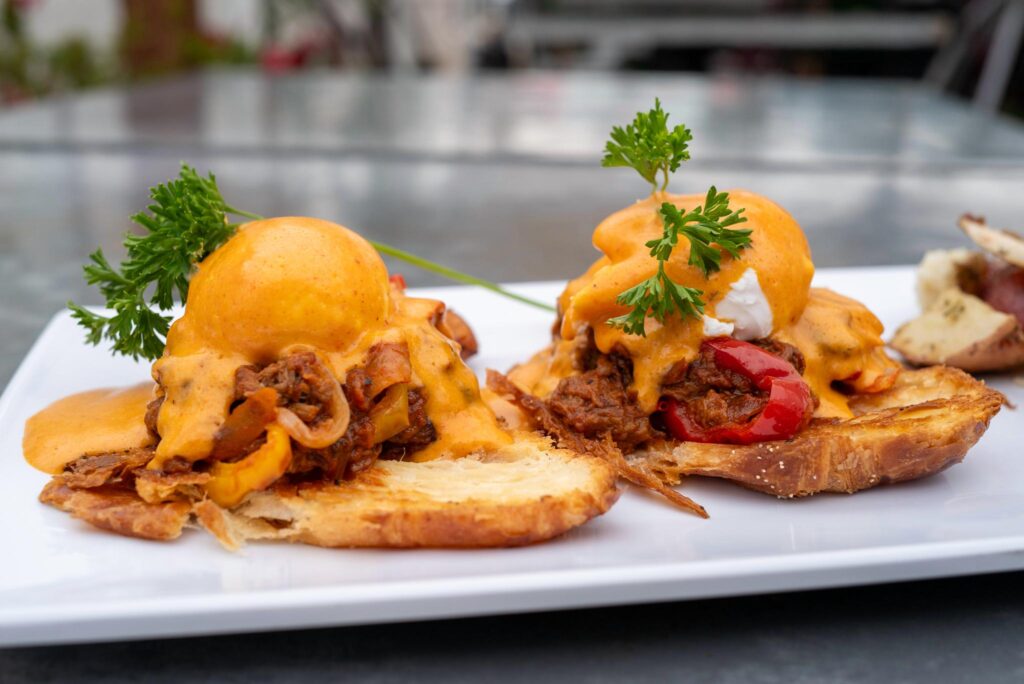
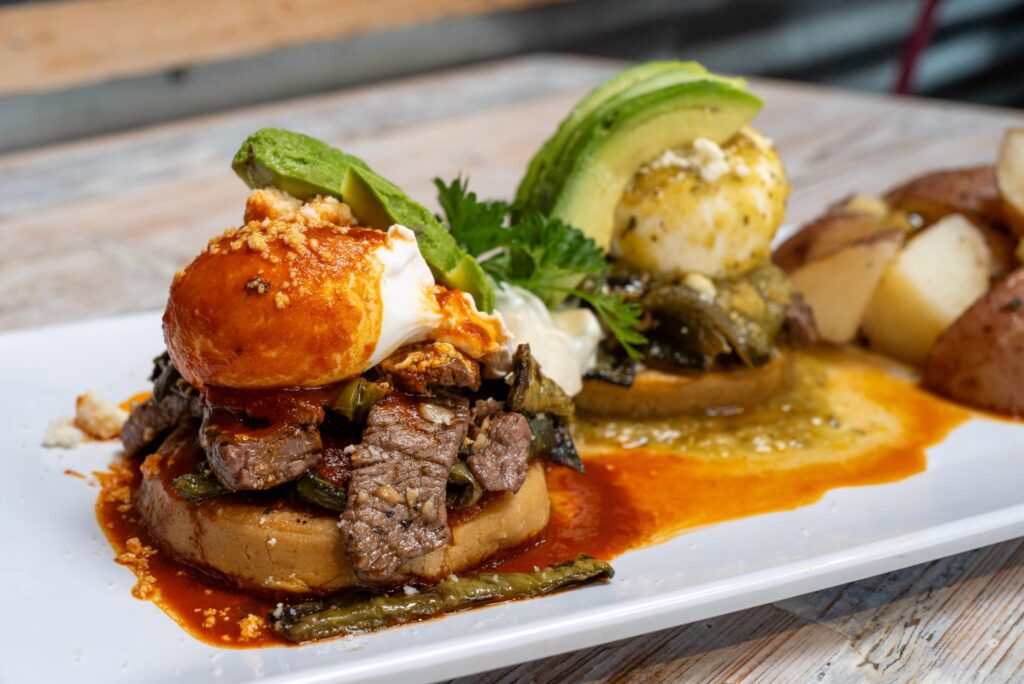
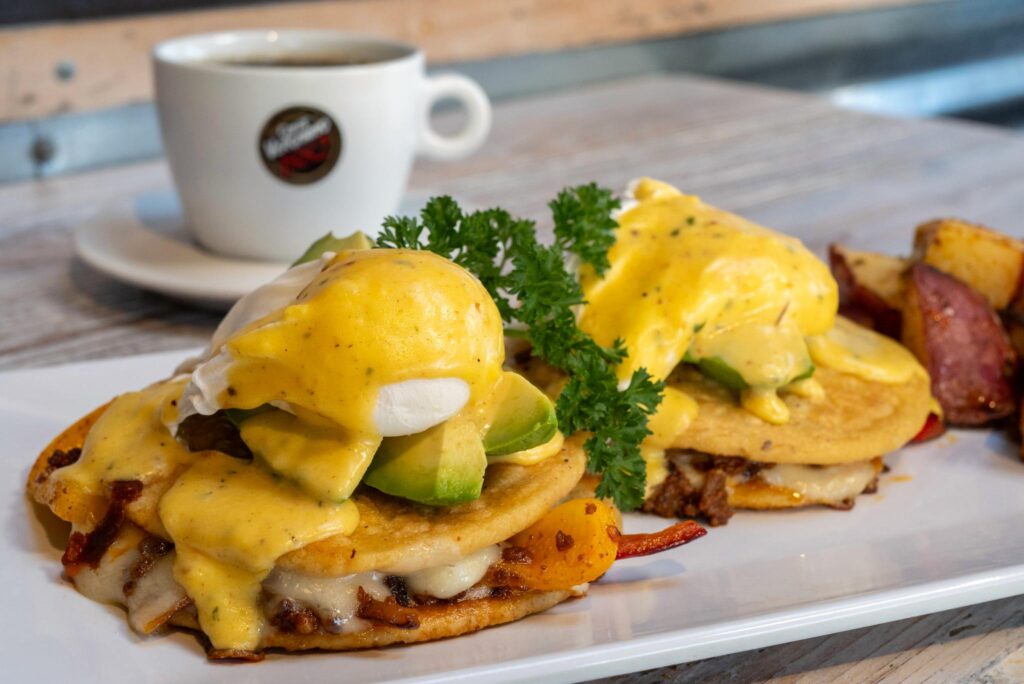
A noble sacrifice of stomach in the service of art.
Hi Kathy. It’s questionable whether it was a sacrifice, and it’s questionable whether it is art! Cheers, Keith
Great article and the photos are mouth watering!
Thanks Robert!
Thanks Keith for your gustatory grand tour of Eggs Benedict.
It’s a favorite of mine but it requires the snorting of a dose of statin before eating these days.
Like you my thoughts went to an X-Files headline of “How many more versions are out there?”
If you mapped “just” the USA’s culinary differences by region you could compile a “Benetton Eggs Benedict” diversionary coffee table book of all the different colors and flavors.
And good to see the Q2 demonstrating its chops in close up situations.
Now did you mention pancakes?
Thanks Jon. I agree, there is considerable diversity in the color of these variations. I doubt that I will find the entire spectrum represented, but so far, red, orange, yellow, and green have all put in an appearance. I have been toying with the idea of a related series on tacos. They, too, come in a wide variety of fillings. You are probably aware that fish tacos are a San Diego speciality. I am not sure Macfilos readers could handle yet more food photography, though, so for now I will retain my focus on los huevos benedictinos! Cheers, Keith
If you wish to close the food files for the time being you could still offer a Benediction for those who need to know there will be a life of food beyond this course.
Can’t speak for others on this topic, but I feel I’ve still a lot to learn on this (I can say this with some authority, having taken some food photos in Tokyo & having royally screwed them up).In defense of your photography, I’ll call as witness Jonathan Slack, who includes luscious seafood in his reviews!
Though, to be pedantic, neither is, sensu strictu, ‘food photography’ — that’s more like working with high-end models who’ve been primped, made-up, posed ….
The photography here is more ‘street’ food (as opposed to ‘street food’): you take what you see and make the best of it (i will refrain from discussing the luscious curves on the eggs bennie).
This all seems worthwhile to me, and I’ve even improved my obento pix a bit by looking back at the work on MACFILOS. I wi
Just my thoughts…
Hi Kathy – excellent points! I had not thought of my interest as ‘street’ food photography, probably because the shots were taken in a restaurant rather than on a street! I might toy with the term ‘candid food photography’ to distinguish it from the highly arranged commercial photography of food, for use in cookbooks and magazines. That would seem applicable regardless of location! The dictionary defines candid as ‘truthful and straightforward’ or in photography ‘taken informally, usually without the subject’s knowledge’. Sounds appropriate! Cheers, Keith